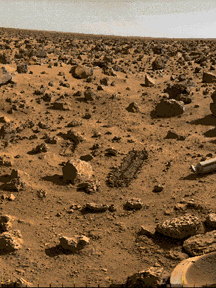This is an image of the surface of Mars.
Click on image for full size
NASA
Planet Structure
The uniquely red global surface of Mars is marked by many interesting
features - some like those on the Earth and others
strangely different. The reddish color is caused by rust
(iron oxide) in the soil.
Some of these features are; volcanoes, canyon systems, river beds, cratered
terrain, and dune fields.
Of these features, the most interesting includes the
apparently dead volcano Olympus Mons, which rises 23 km (~75,000 ft)
above the surrounding plains and is the highest known peak in the
Solar System. Valles Marineris is a giant canyon system that runs
about 2,500 miles across the surface of the planet and reaches depths
of 6 km or 4 miles (for comparison, the Grand Canyon is not more
than 1 mile deep).
You might also be interested in:
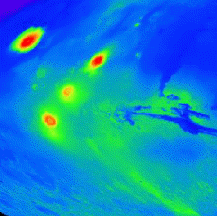
On this map of Mars, the lightly cratered Tharsis Ridge is shown, as well as the heavily cratered Martian highlands (near the bottom of the picture), and Valles Marineris to the right. The volcanoes are
...more
The largest volcano in the solar system is Olympus Mons, shown in the image to the left. Olympus Mons is a Martian shield volcano. The altitude of Olympus Mons is three times the altitude of the largest
...more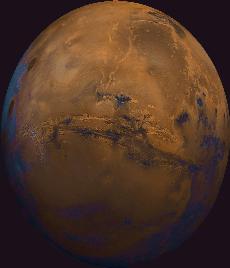
Next to the Tharsis Ridge is Valles Marineris. Valles Marineris is a large system of canyons that stretches 4000 km (2500 mi) along the equator of Mars. It was first imaged in detail by Mariner 9. As can
...more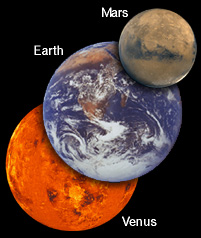
Just as Goldilocks found the porridge that was just right, the Earth seems to be just right for living creatures. The Earth seems to be the perfect distance from the sun for lots of water. Venus is too
...more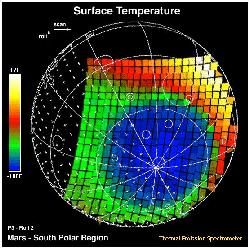
This image shows how cold the surface of Mars can be. The temperature was measured by the Mars Global Surveyor spacecraft. The scale to the left shows that purple regions are the coldest, about -170 degrees
...more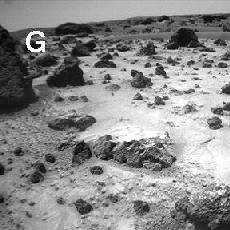
Unlike the rocks of Earth, where there are many things which cause erosion, there are only two main weathering agents on Mars: wind and acid fog. Acid fog is very important, but because there is not a
...more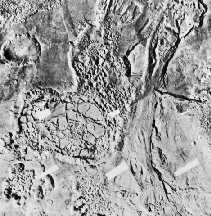
Separate from the Martian outflow channels, or the river valley networks, are large Martian lakes (600 km, or ~1000 miles across) which exhibit evidence of a periodic and catastrophic release of water
...more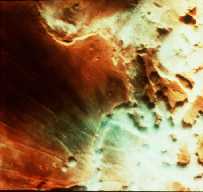
This is an image of fog in a Martian canyon. The presence of fog provides evidence of water, and a water cycle on Mars. More fog has been seen in images returned by Mars Global Surveyor of the south polar
...more


